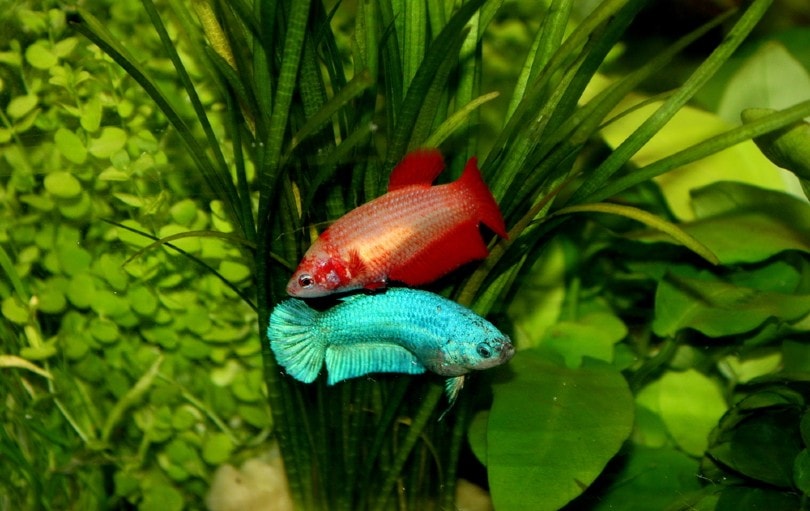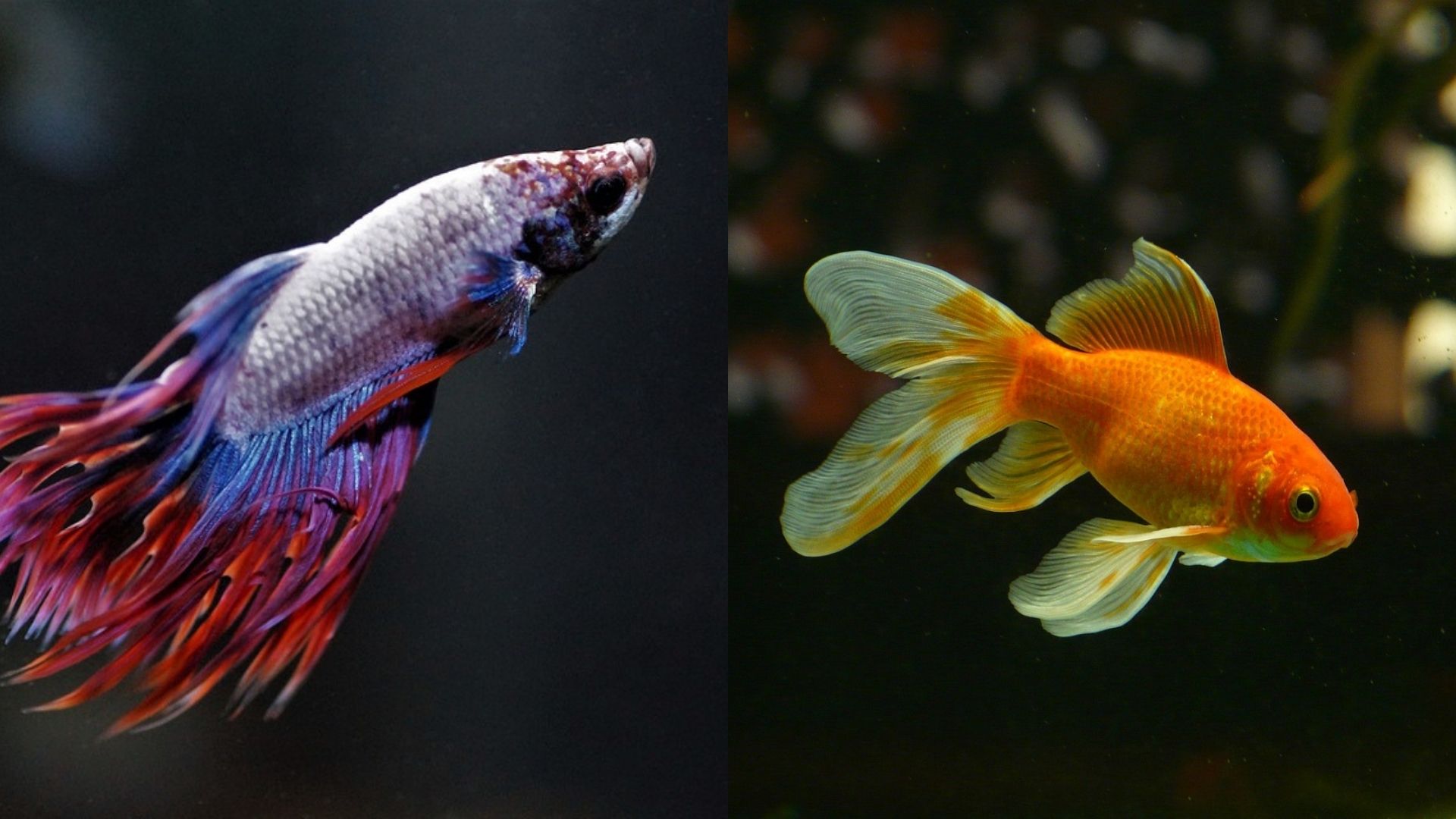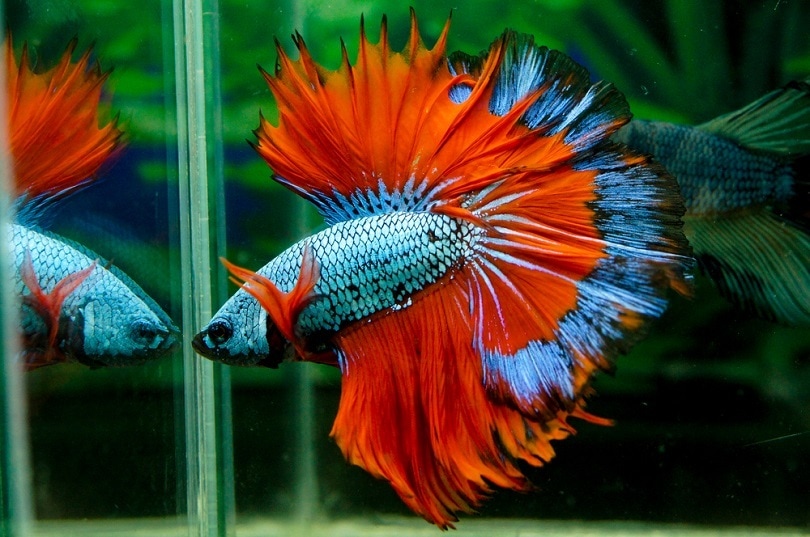
The betta fish (commonly referred to as the Siamese fighting fish) is a popular freshwater fish that is ideal for beginners. Bettas come in an assortment of colors and fin types, with both male and female bettas being sold commercially as aquatic pets.
These tropical fish are known for their beauty and aggressive temperament, which has earned them the name of a fighter fish. These beautiful small fish have many fascinating facts that we will cover in this article, and some of them might even surprise you!
The 11 Fascinating Facts About Betta Fish
1. Male Bettas Are More Colorful Than Females
The male betta fish has always been more popular than female betta fish, mostly because they have more color, and have more fin types to choose from. The female betta might be larger, but they aren’t as attractive as a male betta.
Their fins are usually short and described as “wild-type”, which is why pet stores mainly stock male betta fish on their displays. Female betta fish are usually darker, and they have stripes that are more visible than their male counterparts.
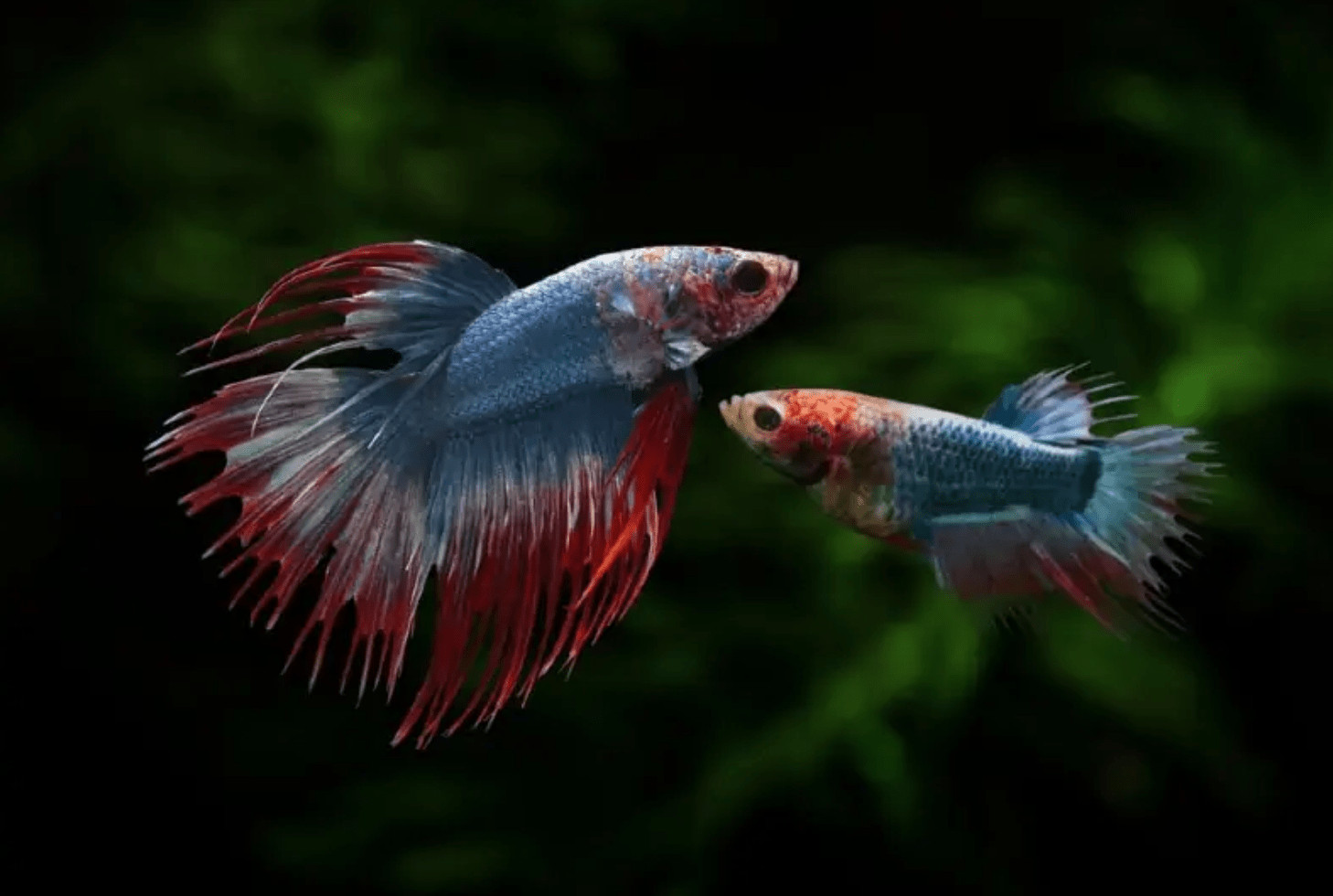
2. Male Betta Fish Are Solitary
Betta fish (especially males) are highly territorial and should be housed alone. They will fight with other betta fish for territory and this fighting can be quite serious in male bettas. Even though female bettas have been known to tolerate each other in large groups known as sororities, it is still risky to keep any species of betta fish together because they are known to fight.
The betta fish might be small and colorful, but they are one of the most aggressive fish in the hobby, hence their name “fighter fish”. It is recommended to keep betta fish alone and avoid housing them with other betta fish to reduce stress, fin nipping, and even death.
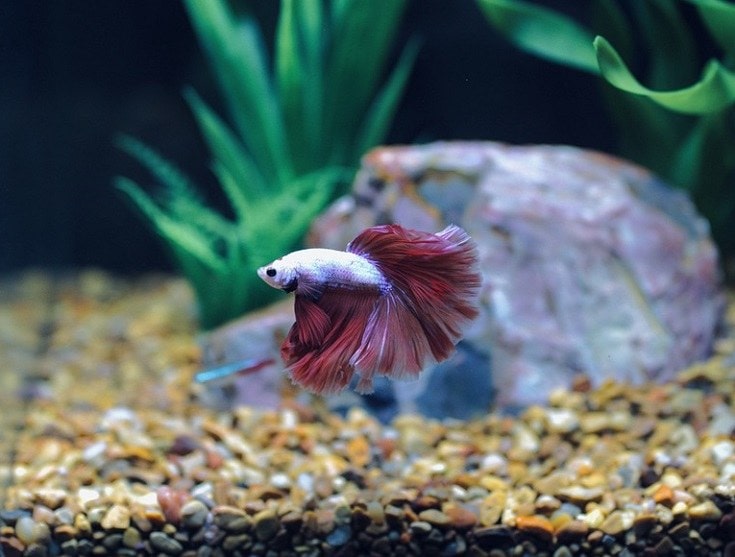
3. Betta Fish Are Carnivores
The betta fish is indeed a carnivore that hunts for worms and invertebrates in the wild. They will rarely eat plant materials in nature, and they live off protein-rich foods. In captivity, you should replicate a betta fish’s diet as best as you can.
These carnivorous fish do well on a staple pellet diet that is high in animal-based protein, and they will benefit from live or freeze-dried worms or shrimp fed alongside their pellet diet. Betta fish can consume plant matter; however, it should only make up a small portion of their diet to ensure that it is kept balanced.

4. Betta Fish Make Bubble Nests
If you have ever observed your betta fish leaving foamy bubbles on the surface of the water, your betta is making a bubble nest. This behavior is mostly seen in males; however, some female betta fish have been known to make bubble nests too. Bubble nests are usually made by mature male bettas who are ready to reproduce.
Making a bubble nest is an instinct when males are trying to attract a female betta, but not all betta fish will make one. Sometimes the water surfaces’ agitation from filters or bubblers can be too strong that your betta cannot find a good place to construct their nest.
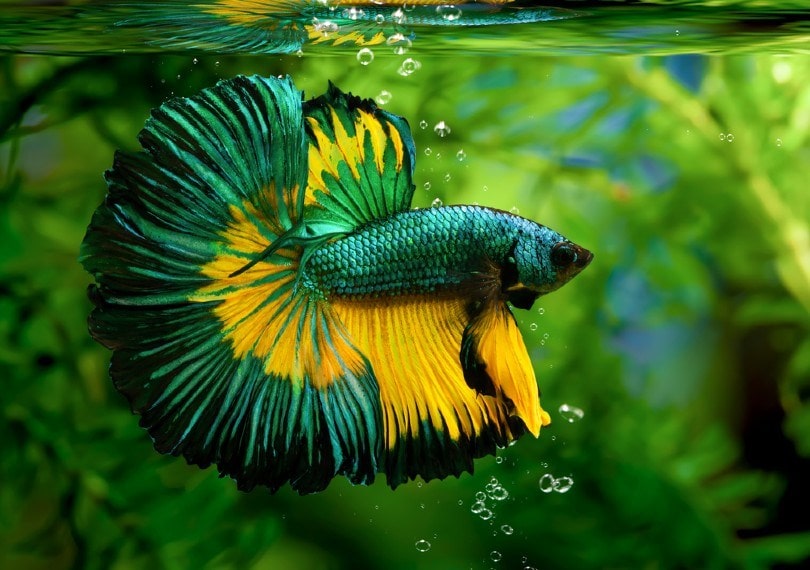
5. Betta Fish Can Breathe Air From The Surface
Betta fish have a respiratory organ that many other fish do not have, known as a labyrinth organ. This organ was developed when bettas needed to take oxygen from the surface of the water in their natural habitat during dry seasons when their rice paddies would dry up. The organ allowed the betta to survive in poor conditions for a few months until the rainfall would flood their habitat again.
Bettas will swim to the surface to gulp oxygen to fill their labyrinth organ, regardless of if they have aeration in their aquarium. Although bettas have a labyrinth organ to help with oxygen intake from the surface, they still require surface agitation for oxygen to be dissolved in the water.
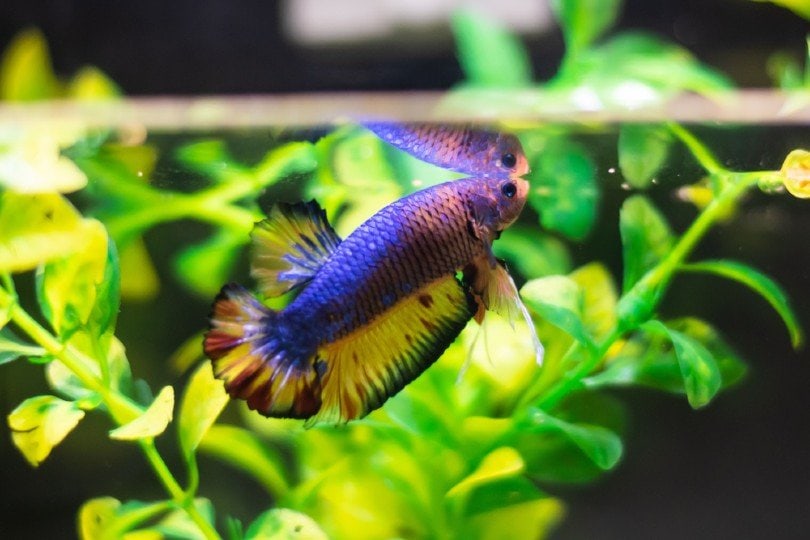
6. Betta Fish Have Teeth
These small fish have small rows of sharp teeth that they use to catch insects and live prey since they are carnivores. Their teeth are usually not noticeable and are not sharp enough to injure a human, but are still there.
They will also use their teeth to fight off other bettas by ripping at their fins to defend their territory. Bettas will also use their teeth to break down their food by “chewing” and tearing at the food to make it easier to swallow.
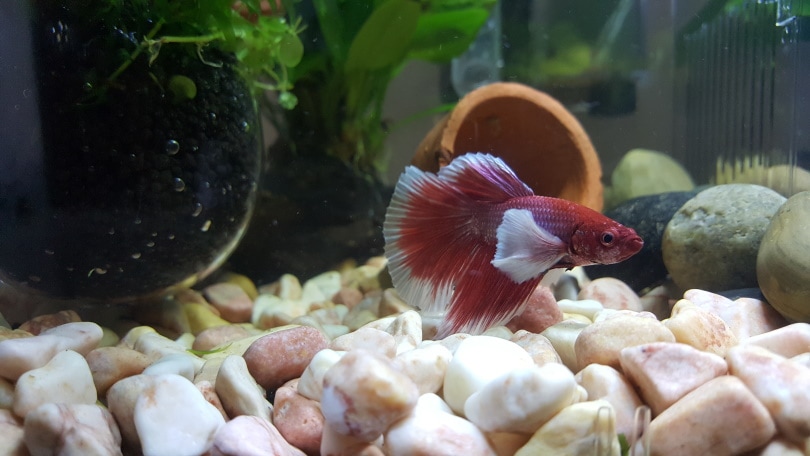
7. Betta Fish Get Stress Stripes
When betta fish are stressed, they will lose their coloration and develop vertical lines across their bodies known as stress stripes. These stripes are more noticeable in female bettas, and color loss is more common in stressed male bettas, but both develop these stripes.
You may notice that a betta that has been placed in a new aquarium looks slightly duller in color than they should, but their color should soon return, and the stress stripes will disappear again once they have settled in. It is also common for bettas to get stress stripes when they are ill, likely because their body is under stress.
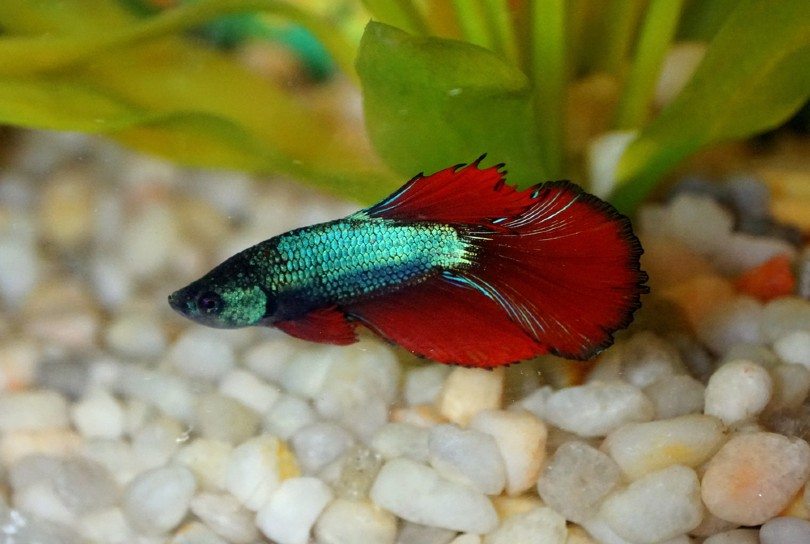
8. Betta Fish Fins Have Taste Buds
Interestingly, betta fish have around 100,000 to 500,000 taste buds on their bodies. Most of these taste receptors are located on their fins, which allows betta fish to “taste” their food in the water before it has even reached their mouth. Compared to our tongue, which has around 10,000 taste buds, betta fish seem to have a much better sense of taste than us.
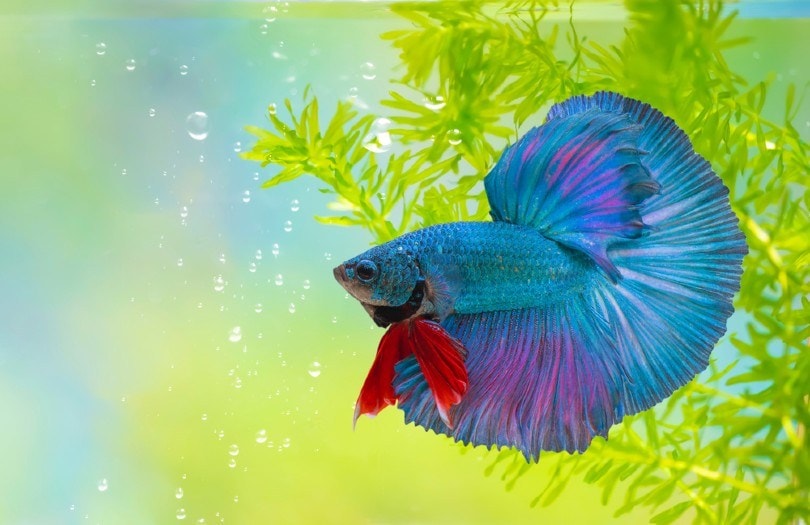
9. Betta Fish Can Regrow Damaged Fins
If a betta fish has sustained an injury to their fins that has caused fin loss or tearing, these damaged fins will start to grow back. However, they might not look as good as they did before. Betta fish have long fins, and this is seen in male bettas who come in a variety of different fin types.
They can easily damage their fins by snagging them on a decoration, getting into a fight with another fish, losing it to a disease like fin rot, or evening by chewing on their tail.
These damaged spots will begin to regrow over the next couple of weeks and you will notice that the regrowth looks like a white piece of fin over the part where the fins have been damaged.

10. Betta Fish Were Used In Fighting Games
When people in Siam originally kept betta fish back in the 1800s, keeping them as ornamental pet fish was not the original plan. At the time, there were fish fighting games or matches where bettas were purposefully placed into the same body of water for a fight, but some of these fights would take hours.
The aggressive nature of the betta fish made them the ideal fish for these games, and there were winners and losers during each match. The losing betta fish would either retreat until the match ended or succumb to their injuries. Most fights were bets and money was given to the owner of the winning fish.
Fortunately, these cruel fish-fighting matches have become illegal in several Asian countries and are not as popular as they once were before. Now, betta fish are kept as beloved household pets or bred for competitions—sort of like a fish beauty pageant!
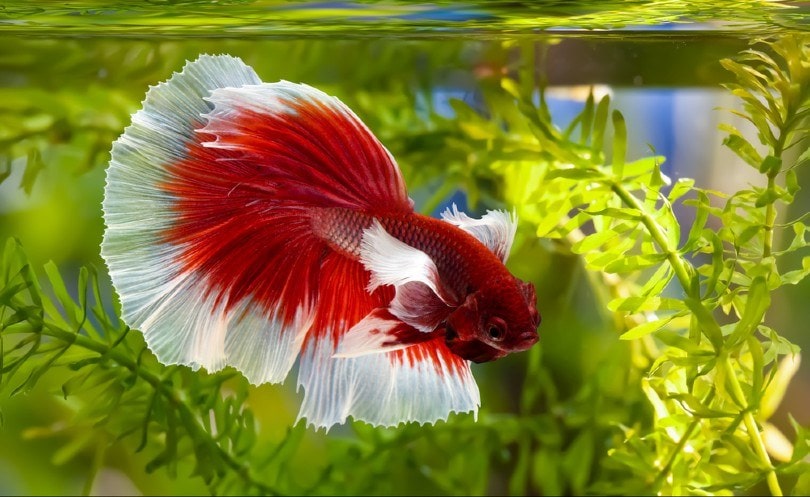
11. Betta Fish Flare When They Are Threatened
Betta fish have a pair of gills underneath their head that they will flare or puff up to look more intimidating. They will usually do this when they feel stressed or to defend their territory. Bettas will flare at each other to look as big as possible when they feel threatened, and some bettas will even flare at their reflection in the glass aquarium. Aside from flaring their gills, bettas will also extend their fins to look intimidating to any fish they feel threatened by.
Both female and male bettas can flare, and it is their way of showing dominance and territorialism in the aquarium towards other fish, usually their species.
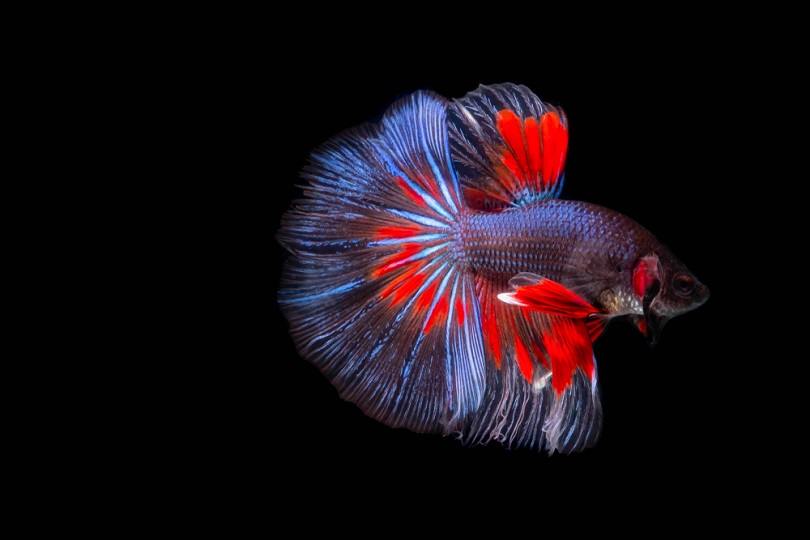
Conclusion
Betta fish are quite fascinating fish, and their small colorful bodies and interesting personalities have made them a favorite in the fish-keeping hobby. You will find betta fish are kept as pets all over the world and are a special favorite for beginners who want a small fish that can be housed alone and doesn’t need much maintenance once all their care requirements are met.
See also: Where Do Betta Fish Come From?
Featured Image Credit: Sirinutbettafarm, Shutterstock



